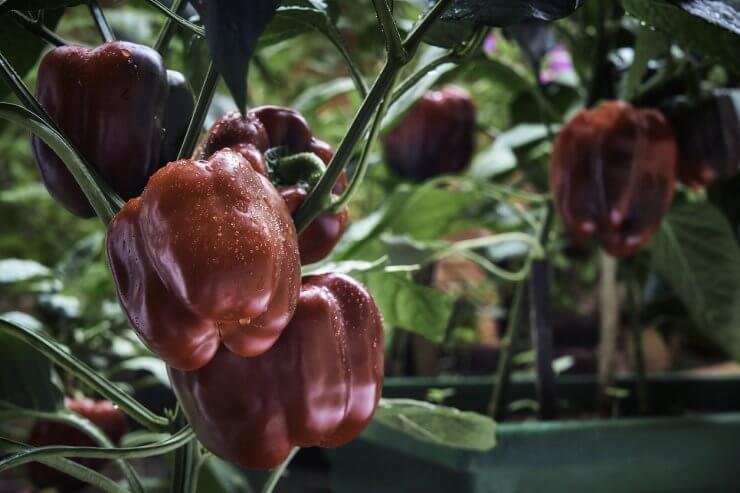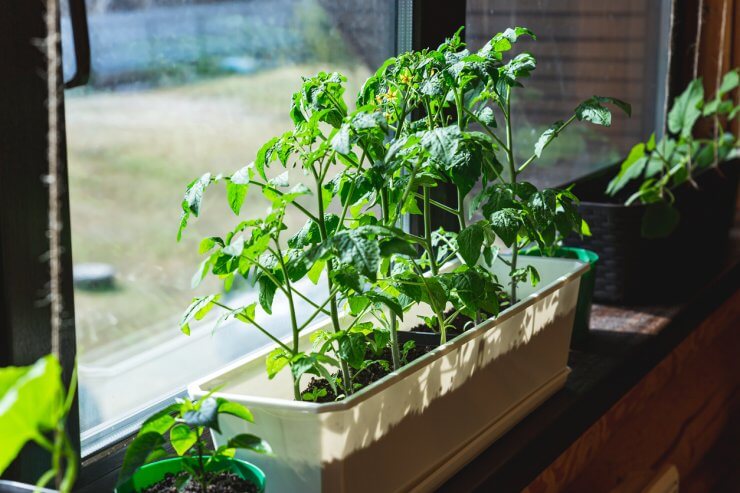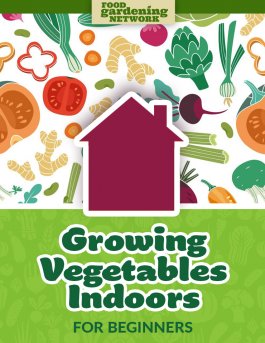
It seems easy enough. When it comes to natural light vs. artificial light, we all know plants love sunlight. They soak up the sun’s rays and turn them into the energy they use to grow and produce. Photosynthesis is pretty darn cool!
Certainly, there was a time when the answer to this question was a no-brainer. Incandescent bulbs just couldn’t compete with natural sunlight. But advancements in science, along with new technology, changed everything.
How much has that changed whether natural light vs. artificial light is best for indoor plants? Let’s shed some light on the subject!
Discover the 3 top options for growing vegetables indoors—when you access the FREEBIE Growing Vegetables Indoors for Beginners, right now!

Natural light vs. artificial light: What your indoor plants want you to know
To understand the differences between natural light vs. artificial light, let’s look real quick at the science of sunlight. Light is energy that travels in waves, or electromagnetic radiation. Along the electromagnetic spectrum, you’ll find longer waves like radio waves and shorter waves, such as X-rays. Right in the middle, between infrared and ultraviolet waves, is the section of visible light. We witness these waves as the rainbow: red, orange, yellow, green, blue, indigo, and violet.
In other words, sunlight contains the full spectrum of visible light, which plants need to produce energy to grow. If you’re interested in more details, such as the energy level of photons, how plant pigments absorb light, and more, check out this Khan Academy article on the properties of light. For right now, here’s how that translates to natural light vs. artificial light for indoor plants.
All sorts of factors impact the amount of light (and the light spectrum) that your indoor plant can absorb. For example, windows and screens can filter the light spectrum. Depending on the position of your home, it can be a challenge for plants to get a full day of sunlight.
That said, leafy greens can thrive without the same range of light as fruiting vegetables, like eggplants, for example. This is part of the reason houseplants can do so well with only the sunlight that comes filtered through windows. However, if you have a south or east-facing window, it is possible for your vegetables to get enough sunlight to grow.
In the case of artificial lights, they’ve come a long way. Full-spectrum grow lights are more energy-efficient and less expensive than even a few years ago. And if you opt for LED grow lights, they neither create a lot of heat nor require a lot of energy. The trick for artificial lights, if you go that direction, is that you need to find one that provides light from both the blue and red ends of the light spectrum.
Plenty of growers successfully grow vegetables with the proper natural lighting.
So, what’s the verdict? As you know, there’s a lot more to growing vegetables than natural light vs. artificial light. The reality, however, is that your indoor veggies will likely do best with a mix of both natural sunlight and grow lights. That’s especially true if you don’t have great natural light or plan to grow veggies in the winter.
But don’t ignore factors like soil quality, watering, temperature, and fertilization. Even perfect light won’t help your vegetables if it’s too cold or they don’t have enough nutrients in the soil.
Have you tried growing a food garden indoors? What kind of light did you use?
Discover the 3 top options for growing vegetables indoors—when you access the FREEBIE Growing Vegetables Indoors for Beginners, right now!




